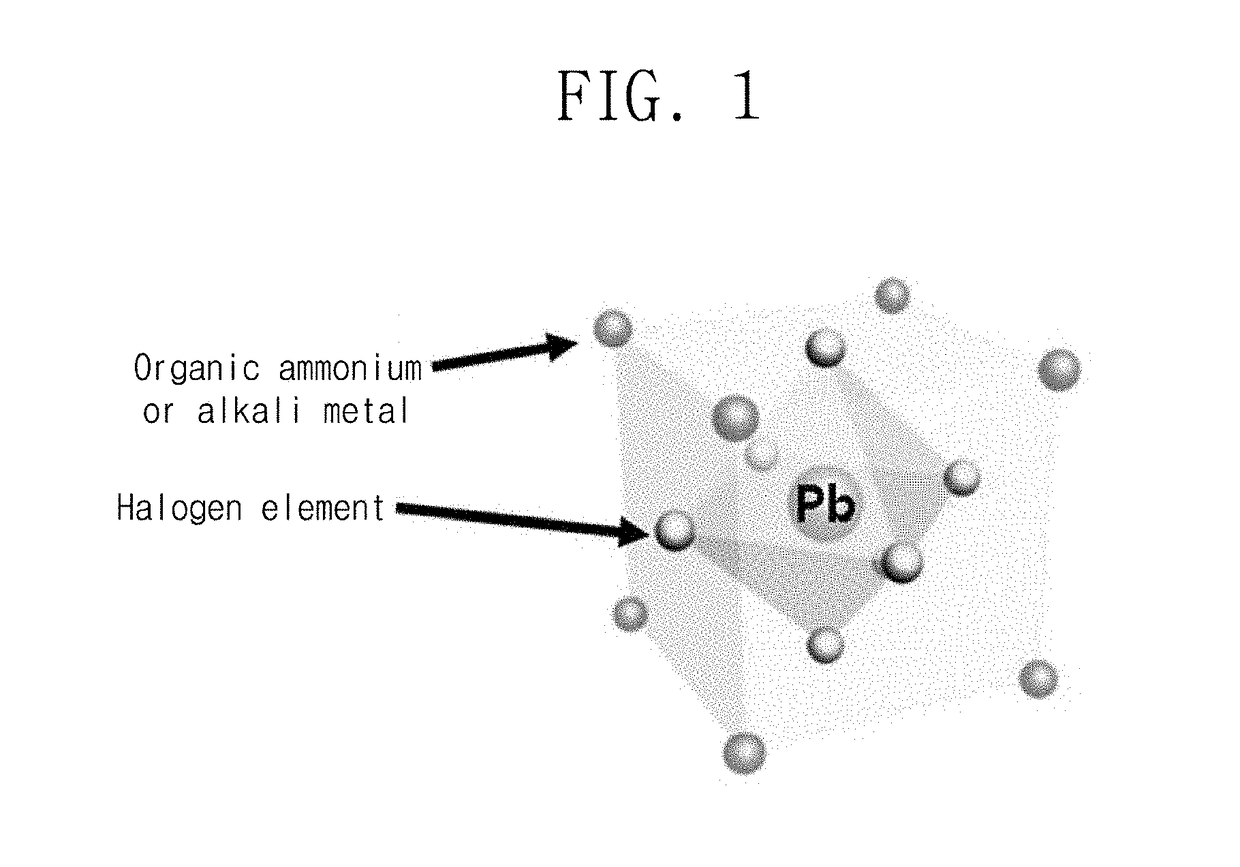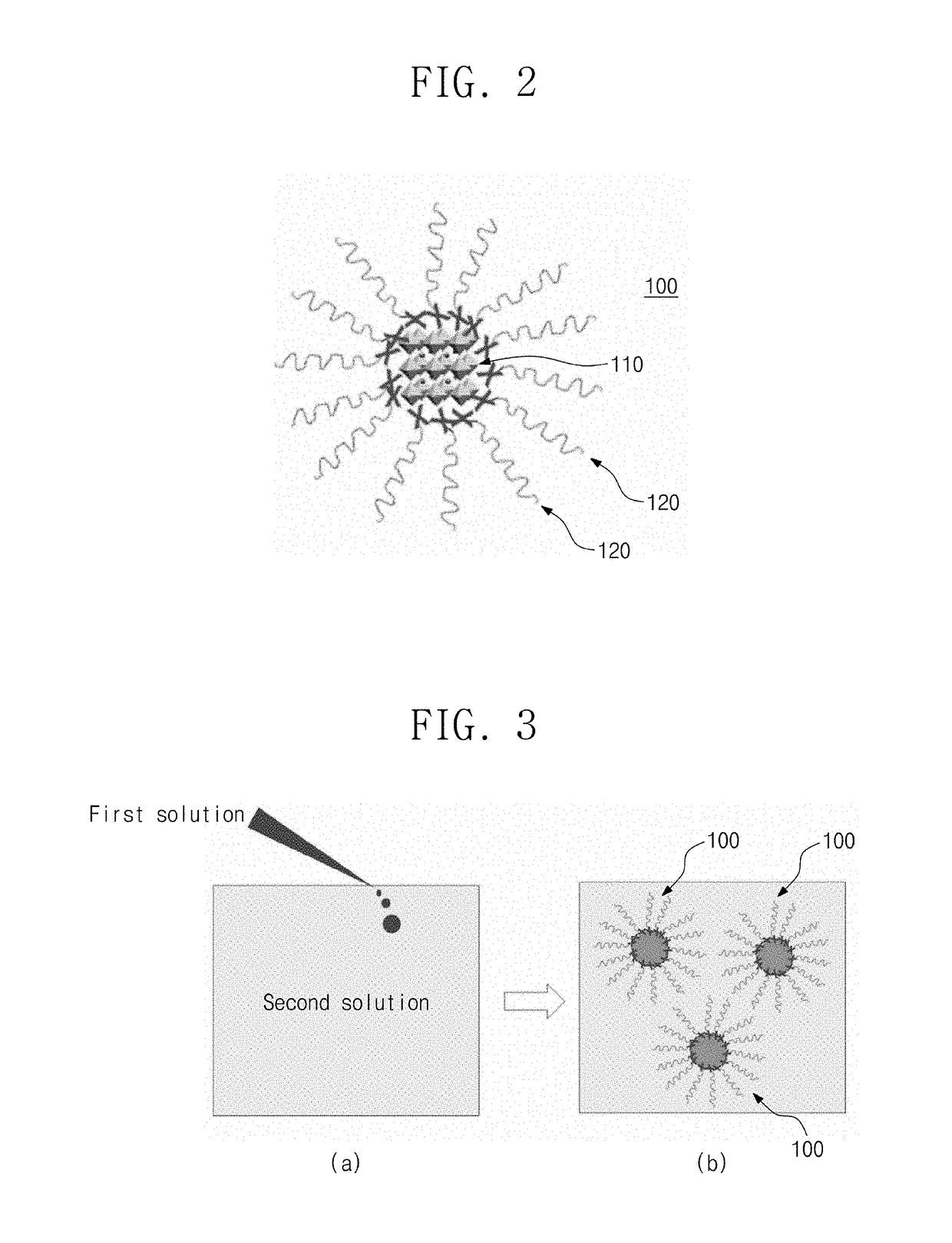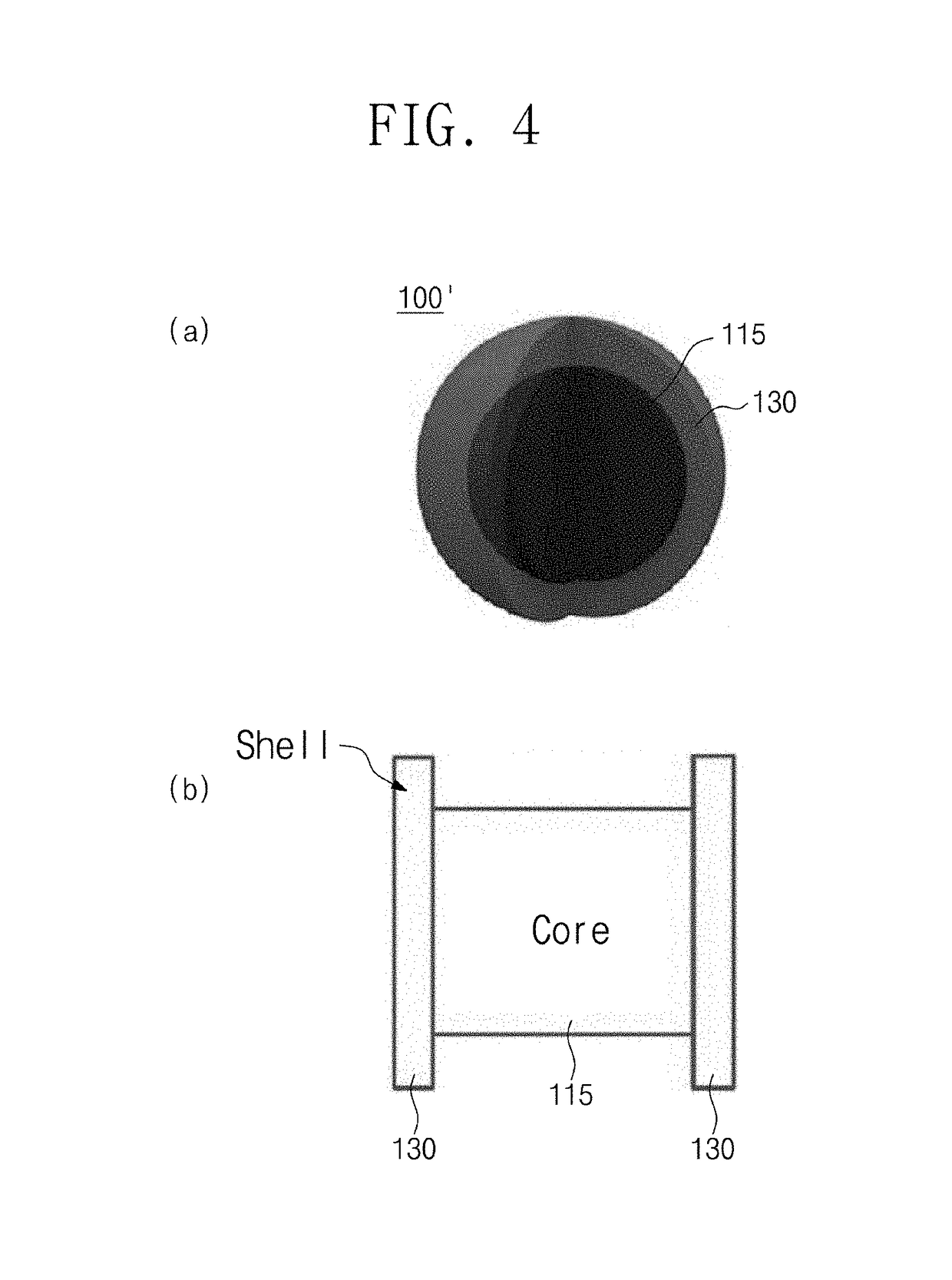Perovskite nanocrystalline particles and optoelectronic device using same
a technology of perovskite and nanocrystal particles, which is applied in the field of perovskite materials, can solve the problems of difficult uniform control of the intrinsic limitations of existing organic light-emitters, and the inability to uniformly control the size of the quantum dots, so as to improve the luminescence efficiency at room temperature, reduce the length of exciton diffusion, and high color purity
- Summary
- Abstract
- Description
- Claims
- Application Information
AI Technical Summary
Benefits of technology
Problems solved by technology
Method used
Image
Examples
manufacturing example 1
[0209]An organic-inorganic-hybrid perovskite nanocrystal particle having a 3D structure according to an embodiment of the present invention was formed. The organic-inorganic-hybrid perovskite nanocrystal particle was formed through an inverse nano-emulsion method, reprecipitation method or hot-injection method.
[0210]Particularly, organic-inorganic-hybrid perovskite was dissolved in a polar solvent to prepare a first solution. Here, dimethylformamide was used as the polar solvent, and CH3NH3PbBr3 was used as the organic-inorganic-hybrid perovskite. Here, the used CH3NH3PbBr3 was prepared by mixing CH3NH3Br with PbBr2 at a ratio of 1:1.
[0211]Also, a second solution in which an alkyl halide surfactant is dissolved in a non-polar solvent was prepared. Here, toluene was used as the non-polar solvent, and octadecylammonium bromide (CH3(CH2)17NH3Br) was used as the alkyl halide surfactant.
[0212]Then, the first solution slowly dropped drop-wisely into the second solution that is being stron...
manufacturing example 2
[0215]The same process as that according to Manufacturing Example 1 was performed, and CH3(CH2)13NH3Br was used as an alkyl halide surfactant to form an organic-inorganic-hybrid perovskite nanocrystal particle having a 3D structure according to an embodiment of the present invention.
[0216]Here, the formed organic-inorganic-hybrid perovskite nanocrystal particle has a size of about 30 nm on average.
manufacturing example 3
[0217]The same process as that according to Manufacturing Example 1 was performed, and CH3(CH2)10NH3Br was used as an alkyl halide surfactant to form an organic-inorganic-hybrid perovskite nanocrystal particle having a 3D structure according to an embodiment of the present invention.
[0218]Here, the formed organic-inorganic-hybrid perovskite nanocrystal particle has a size of about 40 nm on average.
PUM
| Property | Measurement | Unit |
|---|---|---|
| diameter | aaaaa | aaaaa |
| emission wavelength | aaaaa | aaaaa |
| bandgap energy | aaaaa | aaaaa |
Abstract
Description
Claims
Application Information
 Login to View More
Login to View More - R&D
- Intellectual Property
- Life Sciences
- Materials
- Tech Scout
- Unparalleled Data Quality
- Higher Quality Content
- 60% Fewer Hallucinations
Browse by: Latest US Patents, China's latest patents, Technical Efficacy Thesaurus, Application Domain, Technology Topic, Popular Technical Reports.
© 2025 PatSnap. All rights reserved.Legal|Privacy policy|Modern Slavery Act Transparency Statement|Sitemap|About US| Contact US: help@patsnap.com



